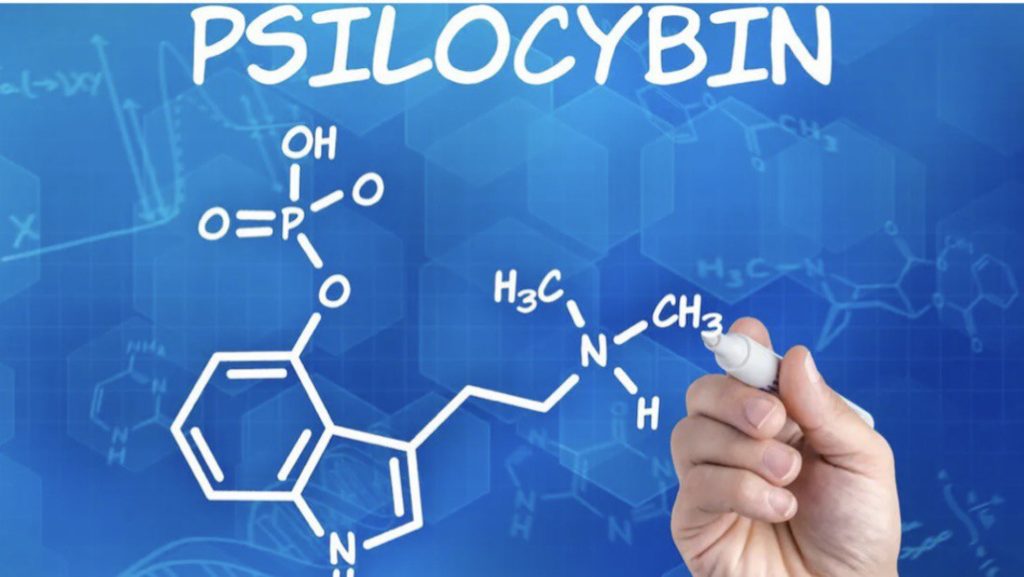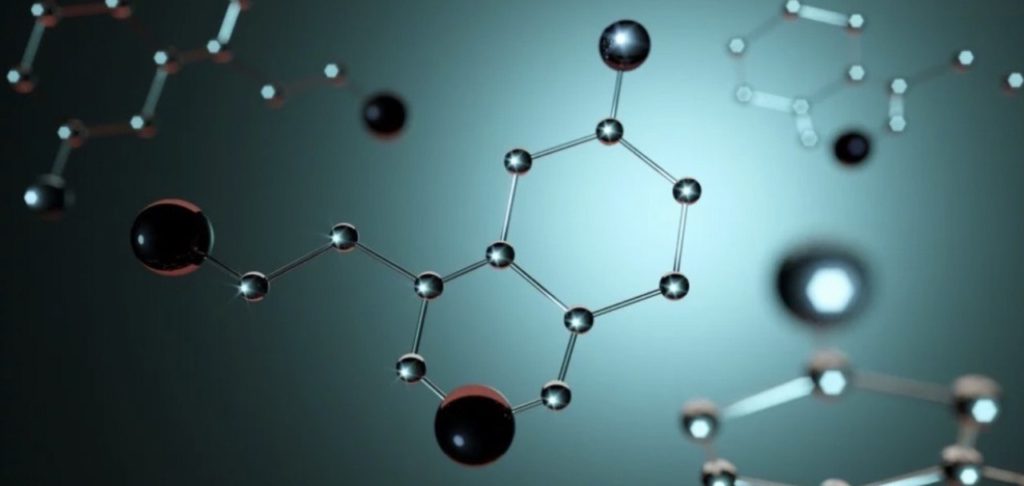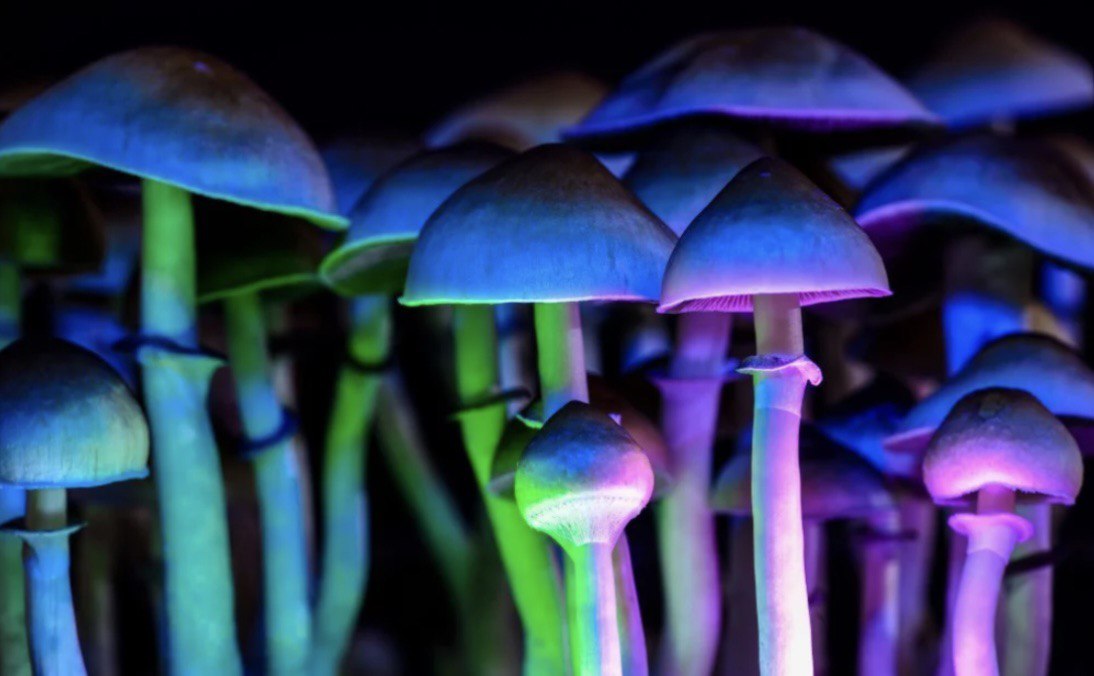
Dr. Münch Irina, Doctor of Naturopathy (ND),PhD (California, USA)
Keywords: psychedelics, psilocybin, hallucinogens, naturopathy, psychoactive substances, mental disorders, depersonalization.
The work is devoted to the study of the effects on the human body of psilocybin, a natural psychedelic compound, which is an alkaloid from the family of tryptamines, a phosphorylated derivative of psilocin.
The applicability of naturopathic remedies in correcting the psychiatric and psychiatric consequences of psychedelic use by patients is explored, as well as the possibility of using psilocybin and other hallucinogens in the therapy of psychiatric abnormalities or diseases.
An evaluation of the ambiguous role of psychedelics – hallucinogens from a naturopathic perspective and is presented by the author in his paper.
Psilocybin (4-phosphoryloxy-N,N-dimethyltryptamine) is a classic psychedelic that is an agonist of the serotonin 2A receptor (5-HT2AR), In addition to psilocybin, well-known substances such as lysergic acid diethylamide (LSD) and mescaline belong to this group. These compounds have a strong destabilizing effect on the nervous system and lead to depersonalization and the end of subjective, psychological time.
Diagnosis of psilocybin use disorder is based not only on the identification of a pathological pattern of behavior, but also on the analysis of genetic and epigenetic factors that influence the progression of addiction and treatment prospects.
For example, addictive personality types-people with low self-control (impulsivity) or high risk-taking and novelty-seeking tendencies-may have an increased risk of developing a psilocybin or other substance use disorder.
In general, treatment of a substance use disorder is complex and involves one or more of the following steps: acute detoxification; prevention and treatment of withdrawal syndrome; cessation/reduction of use; and maintenance of withdrawal.
The various stages of therapy may take place with medication and/or with counseling and support.
The possible enormous therapeutic role of psilocybin, for example as part of a comprehensive treatment for obsessive-compulsive disorder, should be noted.
Many researchers – psychotherapists and neurologists – emphasize the psychotherapeutic value of the described condition for the treatment of psychiatric disorders: sociophobia, depression, neuroses and psychological traumas. From this point of view, a more detailed study of psychological time and its relationship to the rest of mental processes appears as a promising movement in the field of psychology and philosophy of consciousness.
The relevance of the topic is related to the ongoing renaissance of psychedelic research in the world, with the gradual introduction of consciousness-expanding substances (psilocybin, methylenedioxymethamphetamine (MDMA), dimethyltryptamine (DMT), etc.) into psychotherapeutic practice as effective tools for the treatment of depression, drug addiction, psychic trauma, and existential crisis. In the late 1960s and early 1970s, most psychoactive drugs were banned by law, and many researchers, including representatives of the “naturopathic school,” in an effort to achieve results approaching efficacy without the use of psychoactive drugs, turned to non-pharmacological, mind-expanding practices, including bodywork, breathing, and various forms of meditation and concentration. Most of these psychopractices had their roots in yoga, Zen Buddhism, shamanic techniques, or other systems of working with the body and mind (e.g., S. Grof’s holotropic breathing, which, according to the author of the technique, originated largely because LSD was banned).
After much modern research proving the efficacy and considerable safety of psilocybin, the legislative situation in various countries is beginning to change, and psychedelic remedies are returning to the hands of medical doctors – psychiatrists and psychotherapists. In recent years, diving into the nature of the mental and physiological processes observed during psychedelic therapy brings a wealth of new data and discoveries in the fields of neuroscience, psychopharmacology, psychology and psychiatry. In addition to improvements in psychotherapeutic techniques, there is an interdisciplinary quest to find the most accurate, mutually consistent definitions of phenomena such as consciousness and awareness, the unconscious, thinking, the Ego, psychological time, or psychological death (depersonalization).
The efficacy of psilocybin use in the context of treating depression, anxiety disorders and psychiatric trauma, including post-traumatic personality disorder, which have super-powerful negative effects on the psyche of the individual, suggests that one of the key factors influencing the positive outcomes of mental health treatment is the stopping of psychological time accompanied by the depersonalization effect.
A team led by British psychologist and neuroscientist Robin Carhart-Harris of London presented this mechanism on April 11, 2022 in a study published in Nature Medicine (see primary source). Their findings may explain why psilocybin has been shown in previous clinical studies to have a strong effect in treating depression.
American psychiatrist R. Strassman proved that psychedelics (in particular – dimethyltryptamine, a drug) are also contained in the human brain. He described the state of people after its use in the book “Spirit Molecule”.
A holistic analysis of psychological time in the context of transpersonal experience is important.
The results of the study of psychological time in the context of transpersonal experience induced by psychedelics revealed a direct relationship between subjective time and the psychic structure of the Ego, revealing their homogeneity. Suppression of one of these components during clinical studies of psychedelics is necessarily accompanied by deactivation of the other, indicating the need for a holistic approach to the phenomenon of individuality (subjective inner reality) in the fields of philosophy of consciousness and transpersonal psychology. The next important outcome of this research is the non-compactability of temporal thinking and awareness (direct perception), as the brain is either in the process of thinking, i.e., in the process of interpreting the received experience, or in a state of pure perceptual flow (awareness), which calls into question the functionality of syncretic philosophical theories that allow for the symbiosis of Ego + “higher” level of consciousness (transpersonal, timeless, transcendent). These conclusions may serve for further research of the problem of temporality of thinking in the context of philosophy and psychology.
The stopping of psychological time, in this case induced by a psychoactive drug, is the main catalyst of transpersonal experience, the discovery of a “new”, unknowable dimension beyond assimilated experience and dualistically oriented thinking. The state in which the conscious stopping of the inert mechanism of SP occurs has a multifaceted transformational impact on the life of the individual.
Stopping of psychological time can occur due to blocking of autobiographical memory centers (psilocybin) or due to reconsolidation of memory (ayahuasca), in which the experience is edited. In both cases, there is a disruption of the “duration” of experience in the medium of psychological time.
While traditional antidepressants need to be taken regularly over a long period of time, taking just a few doses of psilocybin causes lasting changes in the brain and relief of symptoms. Some researchers claim that the special experience of psychedelic treatment allows patients to break through entrenched thought patterns and thus achieve emotional release.
Researchers emphasize the effect of psychedelics in breaking through the boundaries of psychological time and autobiographical memory, resulting in powerful psychological changes, a characteristic aspect of which is the transpersonal experience, or “death of the Ego.” In an experiment with psilocybin by neuropsychopharmacologists D. Nutt and R. Carhart Harris using fMRI (functional magnetic resonance imaging) in 2012, a link between the psychic structure of the Ego and the default mode neural network (DMN) responsible for the emotional center and memory centers containing autobiographical experiences was revealed. When the DMN is temporarily deactivated under the influence of psilocybin, there is a sense of dissolution of the boundaries between subject and object – which is called “Ego death”.
The phenomenon of psychological death itself is well documented in the history of psychedelics (James, 1882; Huxley, 1954; Savage, 1955; Klee, 1963; Leary et al., 1964; Grof, 1976, 1980; Harrison, 2010; Carhart-Harris et al., 2014; Lebedev et al., 2015, Tagliazucchi et al., 2016), and identifying neurological correlates between psychological time, Ego, and autobiographical memory is the next step in understanding the psychic nature of humans.
There is considerable interest in the therapeutic effects of transpersonal experiences induced by psychedelics, as well as the positive effects of psychopractices and various therapies focused on experiencing the present moment (Zen Buddhism, mindfulness – training of presence in the present moment through meditative techniques, present-focused group psychotherapy PFGT, Gestalt therapy). The effect of classical psychedelics (depending on the concentration of the drug) also affects sensitivity and attention, which are necessary for awareness – that is, for direct perception of reality. This effect, together with the temporary suppression of autobiographical memory, has great therapeutic potential, as it helps to transcend the boundaries of past experience and focus on the present. This aspect of psychedelic therapy is especially valuable for people whose psyche is stigmatized by difficult life experiences that prevent them from perceiving reality directly and holistically.
The increase in functional connectivity may correspond to the described subjective increase in flexibility and emotional relaxation. It should be noted that the acute subjective pleasurable effects of psilocybin also correlate very well with the therapeutic effects. Thus, you could just as easily ask patients what their experience was like using a questionnaire and use that as a marker of response to therapy.
The mechanism of psilocybin’s effect on the brain was studied by a team of British researchers who analyzed magnetic resonance images of the brains of subjects in two independent clinical trials of psilocybin exposure. They found that psilocybin’s positive effect on alleviating symptoms of depression correlated with an increase in functional connections between brain networks. These changes were not observed in patients receiving the antidepressant escitalopram as a control.
FMRI (functional magnetic resonance imaging) shows mechanisms that may be typical of psilocybin. Enhanced functional connectivity was found only after treatment with psilocybin and not after treatment with the classical antidepressant escitalopram. Thus psilocybin was proven to act differently than the classical antidepressant. It also had a stronger antidepressant effect than escitalopram.
The author of this article, Dr. Irina Muench, a naturopathic doctor, is conducting clinical studies to determine the efficacy and safety of psilocybin-based drugs for the treatment of drug-resistant clinical depression and has analyzed the results of current research on the effects of psychedelic drugs on time perception and depersonalization (which is an integral part of stopping subjective time). The drug demonstrates a statistically and clinically significant reduction in the severity of depressive symptoms after three weeks of treatment. A single dose of psilocybin combined with psychological support induced a “sustained response” that lasted up to 16 weeks.
Transpersonal psychology draws heavily from Eastern philosophical systems (Taoism, Buddhism, Zen Buddhism) and psychedelic culture The concept of “transpersonal” implies a suprapersonal timeless state of consciousness, or, as C. Tart points out, a constantly renewing (new) state in which there is no “stable” continuity of psychological time. С. Grof refers to the fact that under the influence of psychedelics the perception of time may differ significantly from the usual, time may be perceived as stretched or compressed, as well as completely stopped. It is this stopping of time that is the attribute of perceptual transpersonality. Maslow suggests the term “peak experience” to designate the states in which this timelessness and fullness of being is felt, which are also actively used in psychedelic culture.
The influence of psychoactive substances on human life is so profound that most psychedelic experiences do not leave the boundaries of thinking and autobiographical experience. Despite this, even “near-transpersonal” experiences can have strong transformative potential, given their ability to reveal contents of consciousness that, in the ordinary state, remain unnoticed and hidden.
The use of psilocybin as a component of holistic (naturopathic) treatment may become, if legislative or organizational (varying from country to country) restrictions are overcome, a breakthrough method of therapy for impulsive-compulsive or depressive conditions.
Psilocybin is an indole alkaloid found in mushrooms that belongs to the group of tryptamines
Literature:
- Iksanov A.V., Sumnaya D.B., LvovskayaE.I. Poisoning by psychodysleptics // New Science: Experience, Traditions, Innovations. 2016. № 6-2 (89). С. 24-26;
- Ovchinnikov A.A., Patrikeeva O.N. Synthetic cannabinoids: psychotropic effects, side effects, risks of use // Journal of Siberian Medical Sciences. 2014. № 3. С. 82;
- Ostapenko Y.N., Belova M.V., Klyuev A.E., Tyurin I.A., Strelnikova T.A. Acute poisoning with psychoactive substances. Clinical picture, diagnosis, treatment // Medline.ru. 2015. Т. 16. № 1. С. 176-186;
- Adams A. J., Banister S. D., Irizarry L., Trecki J., Schwartz M., Gerona R. “Zombie” Outbreak Caused by the Synthetic Cannabinoid AMB-FUBINACA in New York // N Engl J Med. 2017.N 376(3). P. 235-242;
- Adedinsewo D. A., Oluwaseun O., Todd T. Acute Rhabdomyolysis Following Synthetic Cannabinoid Ingestion // N Am J Med Sci. 2016. N 8(6). P. 256-258;
- Aksel G., Bozan O., Kayaci M., Guneysel O., Sezgin S.B.. Rising Threat; Bonsai. // Turk J Emerg Med. 2016. N 15(2). P. 75-78;
- Carl A. P. Ruck, Jeremy Bigwood, Danny Staples, Jonathan Ott, R. Gordon Wasson. (1979). Entheogens. Journal of Psychedelic Drugs. 11, 145-146;
- David E. Nichols. (2016). Psychedelics. Pharmacol Rev. 68, 264-355;James JH Rucker, Luke A Jelen, Sarah Flynn, Kyle D Frowde, Allan H Young. (2016). Psychedelics in the treatment of unipolar mood disorders: a systematic review. J Psychopharmacol. 30, 1220-1229;
- James J.H. Rucker, Jonathan Iliff, David J. Nutt (2018). Psychiatry & the psychedelic drugs. Past, present & future. Neuropharmacology. 142, 200-218;
- Katrin H. Preller, Marcus Herdener, Thomas Pokorny, Amanda Planzer, Rainer Kraehenmann, et. al. (2017). The Fabric of Meaning and Subjective Effects in LSD-Induced States Depend on Serotonin 2A Receptor Activation. Current Biology. 27, 451-457;
- Rainer Kraehenmann, Dan Pokorny, Helena Aicher, Katrin H. Preller, Thomas Pokorny, et. al. (2017). LSD Increases Primary Process Thinking via Serotonin 2A Receptor Activation. Front. Pharmacol. 8.





